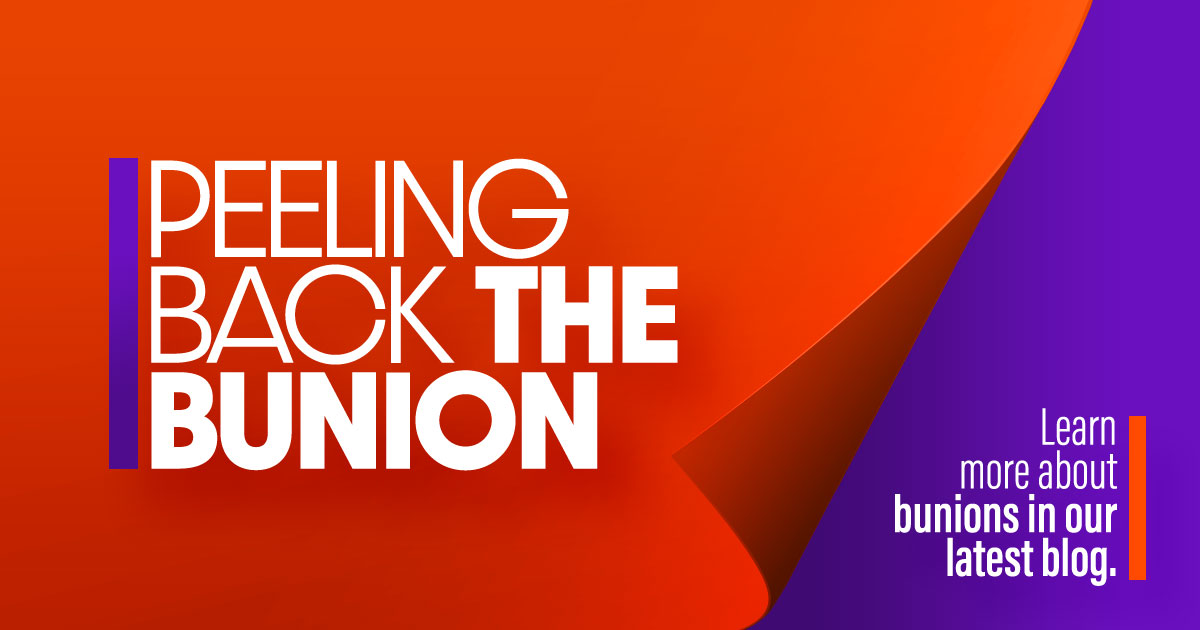The bottom line is pain caused by bunions can interfere with daily life, but there are ways to help relieve discomfort. Read our latest blog to learn more about bunions and how you can treat your feet.
The Breakdown of Bunions
Bunions (hallux valgus) are joint foot deformities that often cause pain and discomfort. At first glance, a bunion appears to be a bump on the side of the big toe, but there’s more to bunions than initially meets the eye. Bunions are a progressive ailment; they begin with the big toe leaning inward toward the second toe and gradually changing the angle of the bones. As time passes, it displays the characteristic bump as it progresses and continually becomes more prominent. Generally, bunions are primarily believed to be genetic, occurring because of the inherited defective foot structure. Below, we’ve listed some interesting facts about bunions and overall foot care that we found relevant to note:
- Approximately 85% of individuals have legs that are different in size. Due to this discrepancy, an uneven gait occurs, and a bunion on the foot of the longer leg takes place.
- Gender seems to play a role, as women are ten times more likely to develop bunion deformities than men.
- The human foot contains 26 bones, meaning that 25% of all the bones made up of your body are in your feet.
- Tight or narrow shoes can result in bunion issues. According to a study conducted by the American Foot and Ankle society, out of 88% of women wearing constricting shoes, 55% had bunions.

Bunion Care – How to Treat Your Feet
What are viable solutions for bunions? The first step when targeting bunion pain is to relieve pressure by choosing the proper footwear. Shoes with a wide and flexible sole can better support the foot and allow more room to accommodate your bunion. Be sure to limit the use of heels and when wearing them, keep the heel low to minimize unnecessary duress to the affected area. A clinician may also advise using semisoft orthoses (shoe inserts) to aid in positioning the foot appropriately as it hits the ground when you step.
Additionally, wearing a splint at night to position and hold the toe straight can ease discomfort. When the pain becomes too hard to ignore, warm soaks, ice packs, and nonsteroidal anti-inflammatory drugs such as ibuprofen can help. Cortisone injections have also proven to grant relief by reducing inflammation. However, they have been found to display side effects, mainly when used often in high doses.
Bunion Correction Surgery
Surgery is usually the final solution for severe bunions; corrective bunion surgery is known as a metatarsal osteotomy or a bunionectomy. This procedure entails correcting the deformed area near the big toe, realigning the bone, and replacing the damaged toe joint with screws, wires, or plates. Surgical techniques vary from case to case; your doctor can help you choose the method tailored to your case. Bunion removal surgery should not be performed merely for cosmetic purposes but for those whose daily lives are affected by their pain. If you have exhausted all other treatment options and the pain persists, you may be a candidate for surgery. Bunion surgery is performed one of two ways:
- Minimally Invasive Bunion Surgery – uses small keyhole incision and a specially designed instrument to see inside the foot and joints. It is recommended for less severe cases due to a smoother and more rapid recovery period.
- Traditional/Open Bunion Surgery – involves opening the skin to access your foot’s bones, tendons, and ligaments. Successful with complex bunions, as it allows for more precise realignment of severe deformities, and reduces the risk of recurrence.

Kick bunions to the curb and learn more about our currently enrolling study on bunions! At Endeavor Clinical Trials, we understand that bunions are common, but your pain doesn’t have to be.
Not worried about bunion pain? Give us a call at (561) 374 – 8461 for details on other research opportunities!
Resources:
https://www.health.harvard.edu/diseases-and-conditions/what-to-do-about-bunions
https://www.ncbi.nlm.nih.gov/books/NBK513134/
https://www.healthline.com/health/bunions

